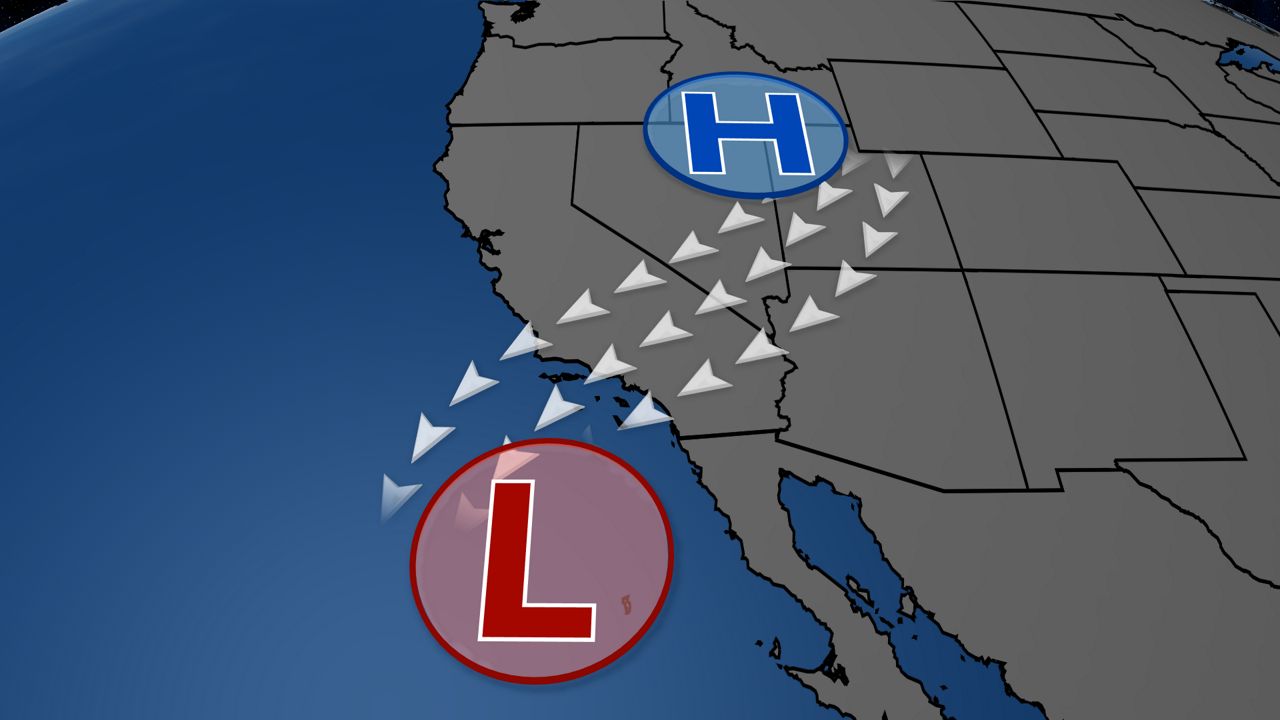Santa Ana winds typically bring hot and dry weather to areas across the Southwest. They are also known for their high wind speeds.
Santa Ana winds are known for causing destruction. They help spread fires rapidly, and the high winds speeds can cause damage.
A common misconception is that the Santa Ana winds are hot because they come from the desert, but they actually tend to develop when deserts are cooler.
High pressure builds up over the Great Basin, causing cooler air to sink. The air in the higher elevations of the desert is then forced downslope into the mountain passes and canyons.

When air travels from higher to lower elevation, the air increases in temperature and decreases in humidity. This is why the Santa Anas are hot and dry.
A funneling effect is also created by the mountain passes and canyons which helps increase the speed of the winds.
The biggest concern for Santa Ana winds is the danger of wildfires. The strong, dry winds help dry out the vegetation and the land. This makes a perfect setup for fires to form.
Once the fires develop, the high speeds of the Santa Anas help spread the fires rapidly.
"Embers from the fire will blow everywhere, landing on dead brush and trees and several fires can occur," says Spectrum News Chief Meteorologist Robert Santos. "It takes one small ember to land in the crack of a home, and you can get a house fire going."
Second, Santa Ana winds are so strong that they can lead to downed trees and power lines. This can cause power outages and damage homes and other buildings. Blowing dust can also reduce visibility.
Gusts sometimes reach 100 mph. If the weather pattern stays in place, these winds and gusts can last for several days.
The winds can also interrupt plane travel and create choppy waves, leading to hazardous boating conditions.
Our team of meteorologists dives deep into the science of weather and breaks down timely weather data and information. To view more weather and climate stories, check out our weather blogs section.



